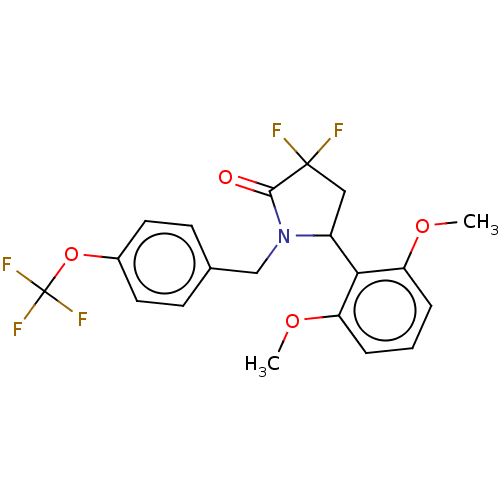Affinity DataIC50: 133nMAssay Description:Antagonist activity at human orexin 1 receptor expressed in CHO cells assessed as inhibition of orexin-A-induced calcium mobilization by FLIPR assayMore data for this Ligand-Target Pair
Affinity DataIC50: 133nMT: 2°CAssay Description:In Vitro Assay: Intracellular Calcium Measurements:Chinese hamster ovary (CHO) cells expressing the human orexin-1 receptor and the human orexin-2 re...More data for this Ligand-Target Pair
Affinity DataIC50: 193nMT: 2°CAssay Description:In Vitro Assay: Intracellular Calcium Measurements:Chinese hamster ovary (CHO) cells expressing the human orexin-1 receptor and the human orexin-2 re...More data for this Ligand-Target Pair
Affinity DataIC50: 193nMAssay Description:Antagonist activity at human orexin 2 receptor expressed in CHO cells assessed as inhibition of orexin-A-induced calcium mobilization by FLIPR assayMore data for this Ligand-Target Pair
Affinity DataIC50: 5.20E+3nMAssay Description:Inhibition of CYP3A4 (unknown origin) using testosterone as marker substrateMore data for this Ligand-Target Pair

